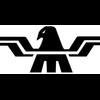Savvy Prebuy (Looks sweet, tastes sour)
-
Members Online
- 802flyer
- atpdave
- exM20K
- Steve Hughes
- prillayo03
- Supereri73
- redbaron1982
- Mark89114
- spistora
- ericrynehess
- Taz
- MatthiasArnold
- larryb
- 1980Mooney
- ProtoFly
- Schllc
- Paul Thomas
- anthonydesmet
- varlajo
- Culver LFA
- Yanyen
- Shadrach
- LANCECASPER
- EricJ
- Echo
- Bolter
- hypertech
- Fly Boomer
- PT20J
- joepilot
- DCarlton
- philiplane
- georgewdean1020
- Hank


Recommended Posts
Join the conversation
You can post now and register later. If you have an account, sign in now to post with your account.